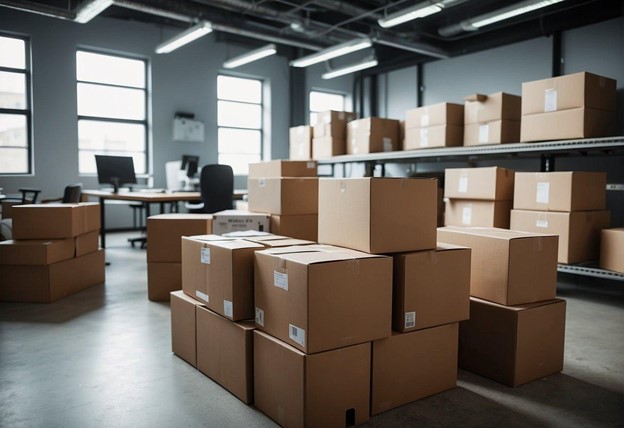Moving day stands as one of life’s most demanding transitions, an event often marked by stress and anxiety. Amid the chaos of boxes and furniture, the emotional weight of leaving behind the familiar can be overwhelming. While stress cannot be entirely eliminated, hiring professional movers, understanding its sources during moving day—the disruption of routines, the fear of forgotten tasks, and the pressure to settle into a new environment—can pave the way for strategies that mitigate anxiety.
Proper organization is key to navigating the labyrinth of moving day challenges with a positive mindset. Detailed planning, from creating methodical checklists to packing non-essential items first, ensures a smoother transition. Integrating personal touches, such as familiar scents or favored items, can also provide a sense of continuity and comfort amidst change.
As stressful as this time may be, it is also an opportunity for growth and transformation. By embracing a practical approach to preparation and maintaining a steady perspective on the process, individuals can not only manage moving day stress but transform their experience into a constructive journey towards their new beginning.
Strategic Planning for Moving Day

Strategic planning is paramount to a stress-free moving day. One must focus on early preparation, meticulous organization, and smart financial management. This process involves creating a thorough checklist, setting a clear budget, and researching and hiring reputable movers.
Creating a Moving Checklist
A comprehensive moving checklist serves as the roadmap for the entire move. It should be detailed and cover every aspect of the move.
- Eight to Twelve Weeks Prior:
- Inventory items room by room.
- Sort belongings into keep, sell, donate, and discard.
- Four Weeks Prior:
- Begin packing non-essentials.
- Label boxes with contents and destination room.
- One Week Prior:
- Confirm moving details with the company.
- Prepare an essentials box for day-of-move necessities.
Budget and Expenses
Effective budget management prevents overspending and helps one control the costs associated with moving.
- Create a Budget Sheet that includes:
- Moving company quotes.
- Packing supplies.
- Potential insurance coverage.
- Include a contingency line for unexpected expenses.
- Maintain records of all moving expenses, as some may be tax-deductible.
Researching and Hiring Movers
The selection of a moving company is crucial and requires thorough research to ensure reliable and professional service.
- Solicit recommendations and read reviews.
- Obtain at least three different quotes for comparison.
- Verify company credentials and insurance policies.
- When hiring professional movers, one should:
- Confirm availability for the desired moving date.
- Discuss all services and fees to avoid hidden costs.
Proper planning, organization, and financial preparedness pave the way for a seamless moving experience. By attending to these elements, stress can be significantly reduced, making for a successful Moving Day.
Packing and Organizing Essentials

Effective packing and organizing are pivotal for a stress-free moving experience. One’s strategy should ensure everything is accounted for, protected, and ready for easy unpacking at the new location.
Starting with Decluttering
Before acquiring any packing supplies, it is essential to declutter. A person should sort through their belongings and decide what to keep, sell, donate, or discard. This reduces the volume of items to pack, which can save time, effort, and moving costs. For each room, create three categories: Keep, Discard, and Donate/Sell.
Acquiring Packing Supplies
Once decluttering is done, the next step is to gather all necessary packing supplies. These include:
- Boxes: Various sizes, including specialty boxes for items like dishes.
- Bubble Wrap: For fragile items.
- Packing Tape: Heavy-duty tape for sealing boxes.
- Markers: For labeling boxes.
- Packing Paper: For wrapping and cushioning items.
- Furniture Pads: To protect furniture.
- Toolset: For disassembling furniture or electronics.
Creating an inventory of supplies can help keep track of what has been acquired and what is still needed.
Packing Room by Room
Organizing a move room by room keeps the process manageable and systematic. For each room, follow these steps:
- Kitchen: Begin with items that aren’t used daily. Label boxes clearly and use bubble wrap for fragile items.
- Bedroom: Clothes can be packed in suitcases or wardrobe boxes. Label boxes with the specific contents and which bedroom they belong to.
- Critical Items: Pack a box or suitcase with essentials, such as important documents, medications, toiletries, and a change of clothes, that should be easily accessible during the move.
By systematically sorting, decluttering, and carefully packing room by room, moving becomes a more organized and less stressful endeavor. Proper labeling and tracking of inventory ensure that unpacking at the new location is straightforward and efficient.
Caring for Family and Personal Wellbeing

Moving can be a significant stressor, but with attention to the wellbeing of both oneself and family members, including children and pets, the process can be managed effectively. Keeping up healthy routines and ensuring emotional support are key in maintaining a stable environment during this transition.
Moving with Children and Pets
When moving with children, creating a sense of excitement about the new environment can help ease their stress. Involve them in the moving process by:
- Allowing them to pack a personal box of treasured items.
- Visiting the new place with them beforehand if possible to create familiarity.
- Maintaining an open conversation regarding their feelings about the move.
For pets, maintaining a semblance of normalcy is crucial:
- Stick to regular feeding and walking schedules.
- Ensure their favorite toys or blankets are accessible to provide comfort.
- Keep them in a quiet, safe space on moving day to minimize anxiety.
Maintaining Healthy Routines
Routines serve as an anchor amid the chaos of moving:
- Prepare meals that are nutritionally balanced to maintain energy levels.
- Prioritize sleep schedules for all family members to help cope with the physical demands of the move.
- Carve out time for self-care activities like exercise or reading to maintain mental health.
Ensuring Emotional Support
The emotional aspect of transitioning from an old place to a new one should not be underestimated:
- Take time to create new memories as a family in your new environment.
- Reach out to local community groups or online forums to establish a support network.
- Acknowledge and validate each family member’s feelings, including any expressions of loss or anxiety.
Regular check-ins with each family member about their mental health and stress levels will reinforce the importance of emotional wellbeing during the moving process.

Recent Comments